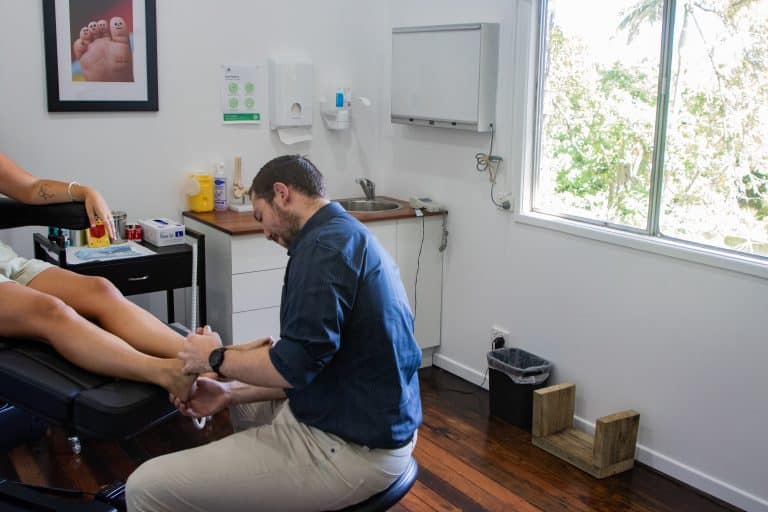There are several aspects of a diabetic assessment and below is an outline of the main tests and equipment that you can expect to be performed during your diabetic foot assessment.
The Doppler picks up the blood flow through the artery being studied and creates what is called a waveform, which can be seen on the display screen.
It also allows us to listen to the rate and rhythm of the pulse.
From this, the podiatrist is able to determine how well the blood is getting down to the toes and if any obstructions are present.
Toe Pressure Index – This test is much like when you have your blood pressure taken however the cuff is around your big toe instead of your arm. It sounds kind of funny, but it works.
The idea behind taking a toe pressure is to identify the level of vascular disease present, if any.
Once the test is completed, a numerical value will appear on the screen and this value correlates to different levels of vascular disease and allows the podiatrist to determine healing potential if an injury was to occur. This is extremely serious and it not something to joke about.
Neurological and Vascular tests – If further testing is required, other tests may be completed.
Depending on the outcome of the four tests above, the podiatrist is able to place you in a risk category and the risk category will determine how often a foot assessment should be performed, however six to twelve months is most common.
The results from all of our testing are recorded; as diabetes is a long-standing disease and monitoring the progress of these results is very important.
If you have any questions or would like to make an appointment for your diabetic foot assessment, please telephone our clinic on (07) 5328 3588 and one of our friendly team will be able to assist you.
Our Podiatry clinics are located within Sippy Downs and Woombye. Our podiatrists look forward to seeing you in the clinic, keeping you fit and active one step at a time.









